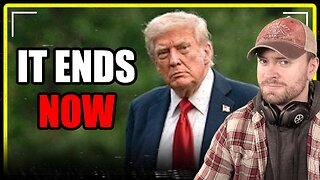Premium Only Content

LIVE with Roger Hanson: Roger's Realtime Talkshow Event
Roger's Realtime Talkshow:
1.During this interval the SDF experienced the atrophy of its ultra-parliamentary right wing to the Independent Labour Party (ILP). This party, led by Keir Hardie, was a big tent party of the left, more heavily influenced by Christian Socialism than by the atheistic Marxism of the SDF. The ILP also had the advantage of having Hardie as a member of the House of Commons after winning the West Ham South seat in the 1892 General Election. This enabled the ILP to argue that it was a more effective vehicle for change than the SDF. Prominent figures such as Henry Hyde Champion, Ben Tillett, Jim Connell and George Lansbury, all left the SDF for the ILP.
a. The British Socialist Party (BSP) was a Marxist political organisation established in Great Britain in 1911. Following a protracted period of factional struggle, in 1916 the party's anti-war forces gained decisive control of the party and saw the defection of its pro-war right wing. After the victory of the Bolshevik Revolution in Russia at the end of 1917 and the termination of the First World War the following year, the BSP emerged as an explicitly revolutionary socialist organisation. It negotiated with other radical groups in an effort to establish a unified communist organisation, an effort which culminated in August 1920 with the establishment of the Communist Party of Great Britain. The youth organisation the Young Socialist League was affiliated with the party.
2. The Independent Labour Party (ILP) was a British political party of the left, established in 1893 at a conference in Bradford, after local and national dissatisfaction with the Liberals' apparent reluctance to endorse working-class candidates. A sitting independent MP and prominent union organiser, Keir Hardie, became its first chairman.
The party remained positioned to the left of Ramsay MacDonald's Labour Representation Committee, which Hardie founded in 1900 and was soon renamed the Labour Party, and to which the ILP was affiliated from 1906 to 1932. In 1947, the organisation's three parliamentary representatives defected to the Labour Party, and the organisation rejoined Labour as Independent Labour Publications in 1975.
*At the 1922 general election several ILP members became MPs (including future ILP leader James Maxton) and the party grew in stature. The ILP provided many of the new Labour MPs, including John Wheatley, Emanuel Shinwell, Tom Johnston and David Kirkwood. However, the first Labour government, returned to office in 1924, proved to be hugely disappointing to the ILP. This came despite 30% of the cabinet holding ILP membership; of the most prominent of these figures, Ramsay MacDonald was removed as editor of the ILP's Socialist Review in 1925, and Philip Snowden resigned from the ILP in 1927.
3. 1928 policy conferences
The ILP's response to the first Labour government was to devise its own programme for government. Throughout 1928, the ILP developed a "Socialism in Our Time" platform, largely formulated by H. N. Brailsford, John A. Hobson and Frank Wise.
a. The programme consisted of eight policies:
*The Living Wage, incompletely applied
*A substantial increase of the Unemployment Allowance
*The nationalisation of banking, incompletely applied
*The bulk purchase of raw materials
*The bulk purchase of foodstuffs
*The nationalisation of power
*The nationalisation of transport
*The nationalisation of land
-
 6:22:38
6:22:38
Live with Roger Hanson
14 days agoDreagus Productions
128 -

Drew Hernandez
3 hours agoISRAEL PLANNING POSSIBLE DRAFT IN USA & TRUMP'S VIEW ON ETERNAL LIFE ANALYZED PT 2
26.2K11 -
 3:08:07
3:08:07
TimcastIRL
6 hours agoTexas Republicans Win, House Passes Redistricting Map, GOP Looks To Gain 5 Seats | Timcast IRL
168K70 -
 1:30:34
1:30:34
FreshandFit
6 hours agoHow To Stay Focused While Pursuing Women...The Good, The Bad, And The Ugly
49.1K33 -
 1:47:05
1:47:05
Drew Hernandez
11 hours agoISRAEL PLANNING POSSIBLE DRAFT IN USA & TRUMP'S VIEW ON ETERNAL LIFE ANALYZED PT 1
32.2K58 -
 29:55
29:55
Afshin Rattansi's Going Underground
3 days agoProf. Omer Bartov: The REAL REASON the US, UK, and EU Have Not Recognised Israel’s Genocide in Gaza
31.9K28 -
 6:28:34
6:28:34
SpartakusLIVE
8 hours agoWednesday WZ with the Challenge MASTER || Duos w/ GloryJean
47K1 -
 2:36:12
2:36:12
Barry Cunningham
8 hours agoREACTING TO STEPHEN MILLER | KASH PATEL | TULSI GABBARD INTERVIEWS AND MORE NEWS!
80.1K70 -
 3:51:51
3:51:51
Alex Zedra
5 hours agoLIVE! Solo Scary Game night
33.3K1 -
 58:01
58:01
MattMorseTV
7 hours ago $10.75 earned🔴The Dems. just lost 4.5 MILLION voters.🔴
69.8K66